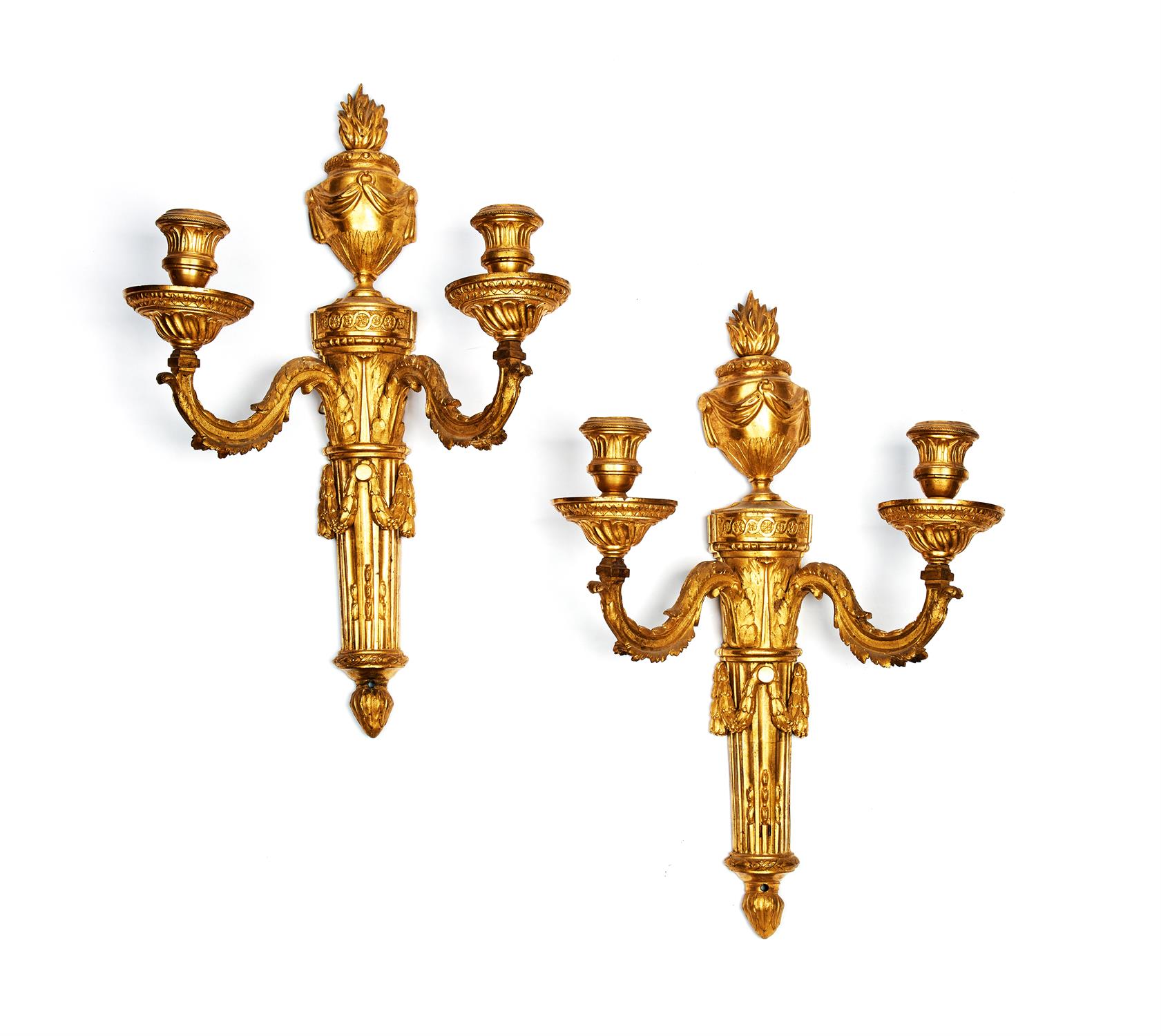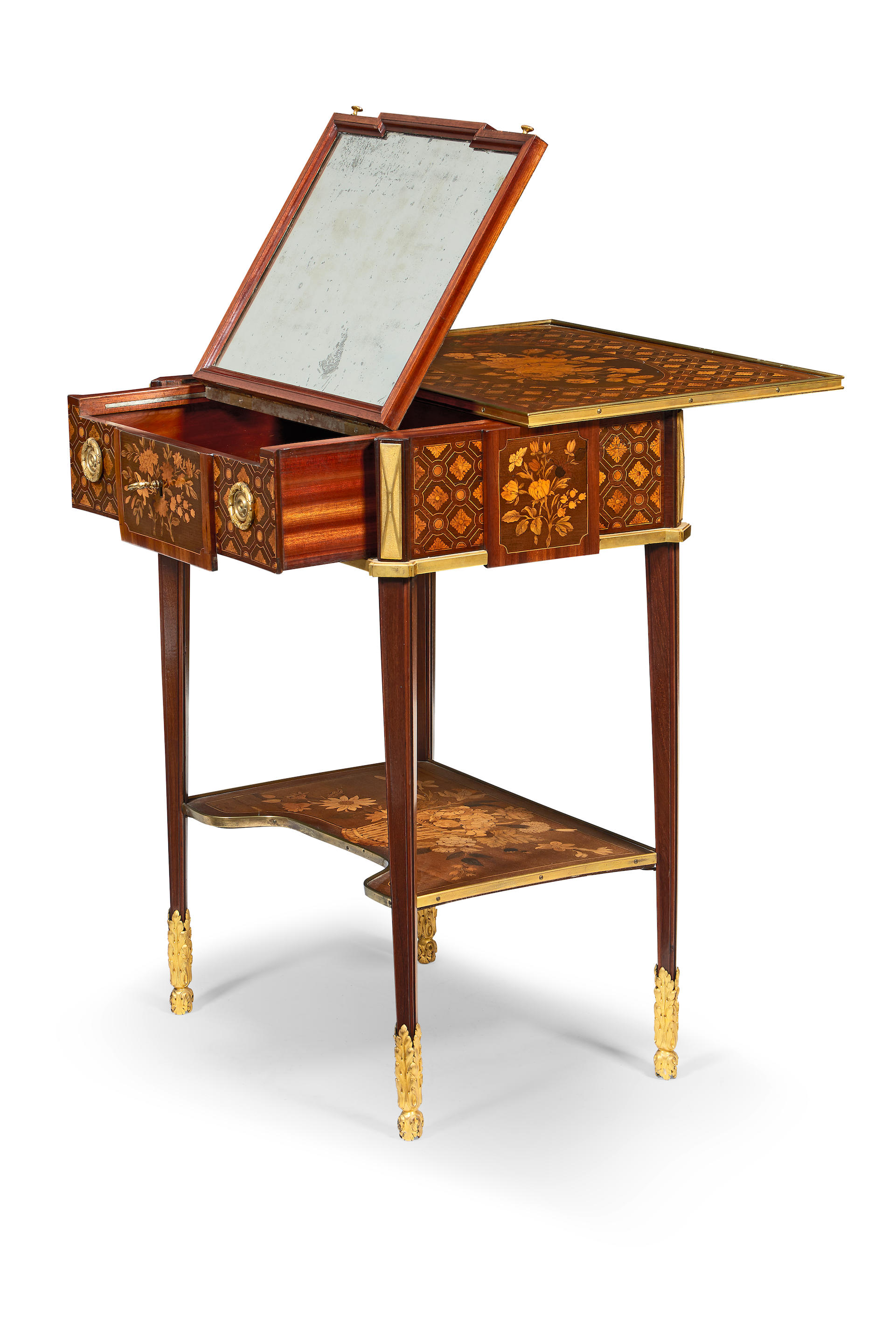A fine and impressive Louis XVI style ormolu figural mantel clock with centre seconds and concentric calendar The movement by Pierre-Honoré-César Pons and bearing signatures for Ferdinand Berthoud Paris, circa 1830 The circular four pillar two train outside countwheel bell striking movement with the pillars pinned at the rear, the five-wheel going train with fine pinwheel deadbeat escapement positioned to the centre of the backplate with depth adjustment to the pallets, fine beat screw to crutch and regulated by half seconds disc-bob pendulum incorporating Brocot type regulation to suspension, the backplate stamped with Pons, MEDAILLE D OR, 1827 roundel over engraved initials B Y and stamped number 1 9, the lower edge also boldly engraved in a downward curve Ferdinand, Berthoud AParis and the left hand edge further stamped 200, the 7.5 inch circular convex enamel dial polychrome painted in the manner of Coteau inscribed Ferdinand Berthoud AParis to centre within concentric red Arabic numerals for date of the month within chapter ring with vertical Arabic numerals and gilt fleur-de-lys half hour markers, the outer track annotated with the months of the year and their length in French within concentric band polychrome painted with oval panels representing the signs of the Zodiac with fine gilt foliate decoration between, with steel centre seconds hand, scroll-pierced gilt minute and hour hands and snakehead/tail hands for the calendar, set behind a hinged convex glazed gilt brass bezel cast with guilloche scroll decoration to surround, the fine substantial sculpted ormolu case cast with cherubs and lovebirds within billowing clouds enveloping the dial draped with floral sprays and with bows, quivers and trumpets applied around the swept panelled foot, the D-ended plinth base inset with crisply cast basket of flowers centred foliate scroll infill to the oxidised ground apron panel flanked by floral festoon swags to the conforming curved end sections, on six cast toupe feet, 66cm (26ins) high. Provenance: Brocket Hall, Hertfordshire Pierre-Honoré-César Pons was born in Paris in 1773 and after studying with the Jesuits in the rue Mouffetard he went to train under the eminent clockmaker Antide Janvier. Unfortunately the unrest of the French Revolutionary period disrupted his training but he was recommended by Janvier to the prestigious Lepaute family who took him on in 1798. Pons completed his training under the Lepautes and developed an interest in precision horology; in 1803 he opened his own workshop rue de la Huchette, near the Place Saint-Michel. In order to satisfy the financial demands of running a workshop, whilst taking time to work on the development of precision horology, Pons acted as supplier of movements to many the eminent horologists of the period such as Berthoud, Breguet and Lepine. During this time he developed several escapements and created improved wheel-cutting and pinion polishing machines. With the encouragement of Ferdinand Berthoud in 1804 Pons presented his Observations sur l échappement libre to the Academy of Sciences where it was praised by the jury and the Academy congratulated him. Around this time the French clockmaking town of Saint-Nicholas d Aliermont was in crisis due to the collapse of the industry. Napoleon s minister responsible for Fine Arts, Industry and Commerce, the Count de Champagny, ordered the Académie des Sciences to find someone suitable to turn the industry around. Honoré Pons was approached as he had the necessary skills and had developed the tools and practices most appropriate for the task. After a period of reluctance he accepted on the basis that the state will pay him a generous amount for his machines as long as they were installed and used in the Saint Nicholas workshops. By 1808 Pons was producing fine quality blanc-roulants for an affordable price which received high praise from makers such as Breguet and recognition by the Academie in their report to Napol
A fine and impressive Louis XVI style ormolu figural mantel clock with centre seconds and concentric calendar The movement by Pierre-Honoré-César Pons and bearing signatures for Ferdinand Berthoud Paris, circa 1830 The circular four pillar two train outside countwheel bell striking movement with the pillars pinned at the rear, the five-wheel going train with fine pinwheel deadbeat escapement positioned to the centre of the backplate with depth adjustment to the pallets, fine beat screw to crutch and regulated by half seconds disc-bob pendulum incorporating Brocot type regulation to suspension, the backplate stamped with Pons, MEDAILLE D OR, 1827 roundel over engraved initials B Y and stamped number 1 9, the lower edge also boldly engraved in a downward curve Ferdinand, Berthoud AParis and the left hand edge further stamped 200, the 7.5 inch circular convex enamel dial polychrome painted in the manner of Coteau inscribed Ferdinand Berthoud AParis to centre within concentric red Arabic numerals for date of the month within chapter ring with vertical Arabic numerals and gilt fleur-de-lys half hour markers, the outer track annotated with the months of the year and their length in French within concentric band polychrome painted with oval panels representing the signs of the Zodiac with fine gilt foliate decoration between, with steel centre seconds hand, scroll-pierced gilt minute and hour hands and snakehead/tail hands for the calendar, set behind a hinged convex glazed gilt brass bezel cast with guilloche scroll decoration to surround, the fine substantial sculpted ormolu case cast with cherubs and lovebirds within billowing clouds enveloping the dial draped with floral sprays and with bows, quivers and trumpets applied around the swept panelled foot, the D-ended plinth base inset with crisply cast basket of flowers centred foliate scroll infill to the oxidised ground apron panel flanked by floral festoon swags to the conforming curved end sections, on six cast toupe feet, 66cm (26ins) high. Provenance: Brocket Hall, Hertfordshire Pierre-Honoré-César Pons was born in Paris in 1773 and after studying with the Jesuits in the rue Mouffetard he went to train under the eminent clockmaker Antide Janvier. Unfortunately the unrest of the French Revolutionary period disrupted his training but he was recommended by Janvier to the prestigious Lepaute family who took him on in 1798. Pons completed his training under the Lepautes and developed an interest in precision horology; in 1803 he opened his own workshop rue de la Huchette, near the Place Saint-Michel. In order to satisfy the financial demands of running a workshop, whilst taking time to work on the development of precision horology, Pons acted as supplier of movements to many the eminent horologists of the period such as Berthoud, Breguet and Lepine. During this time he developed several escapements and created improved wheel-cutting and pinion polishing machines. With the encouragement of Ferdinand Berthoud in 1804 Pons presented his Observations sur l échappement libre to the Academy of Sciences where it was praised by the jury and the Academy congratulated him. Around this time the French clockmaking town of Saint-Nicholas d Aliermont was in crisis due to the collapse of the industry. Napoleon s minister responsible for Fine Arts, Industry and Commerce, the Count de Champagny, ordered the Académie des Sciences to find someone suitable to turn the industry around. Honoré Pons was approached as he had the necessary skills and had developed the tools and practices most appropriate for the task. After a period of reluctance he accepted on the basis that the state will pay him a generous amount for his machines as long as they were installed and used in the Saint Nicholas workshops. By 1808 Pons was producing fine quality blanc-roulants for an affordable price which received high praise from makers such as Breguet and recognition by the Academie in their report to Napol














Testen Sie LotSearch und seine Premium-Features 7 Tage - ohne Kosten!
Lassen Sie sich automatisch über neue Objekte in kommenden Auktionen benachrichtigen.
Suchauftrag anlegen